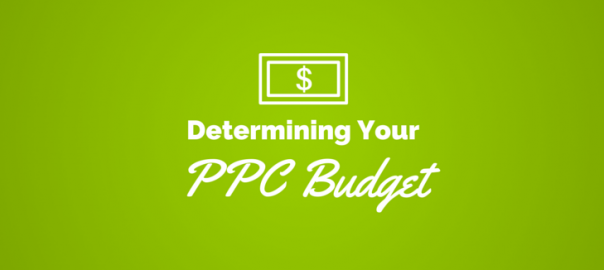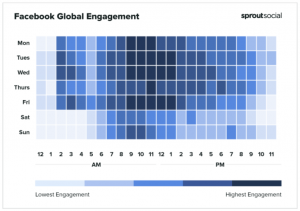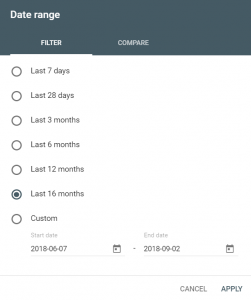
The numbers involved in PPC sometimes astound me. You’ll go to take one last look at a spreadsheet you’ve spent hours in, and your eyes cross. How did they not cross sooner? There’s CPC, position, and impression share, along with 10 other numbers and percentages. All lined up next to each other, competing for your attention.
But the most daunting number to figure out? Budget.
“You’ve got to spend money to make money, my friend.” Well, we all know that. But that makes it sound so simple, it’s almost annoying.
Okay, so how much money do I have to spend, and how much money will I make off of that?
It sucks that there’s no right answer to that question. Some campaigns (if you’re lucky) will get a 1,000% ROI, and your boss or client is offering to name their first born after you. But some will earn a much less impressive conversion rate.
So, how can you figure out how much money you have to spend, daily and overall, to meet your campaign’s revenue or lead generation goals?
The holy grail: your PPC test.
The Importance of Testing
It’s always surprising to realize how few people run a thorough PPC test. It’s like dipping your toe in the water before diving in. You’re potentially spending thousands of dollars per day on a campaign. Don’t you want to find out if the water’s warm first?
Testing new networks, new keywords, new sources, new…anything, really. It’s imperative to “try before you buy.” I get that some may see it as spending additional money on something that may not work, but that’s why you wade in slowly.
PPC tests should be considered an investment instead of a costly risk. Even if your conversion rate never reaches the point you wanted it to, you walk away with enough knowledge to improve it. And you can do that before you spend the big bucks on a full campaign.
And you never know. Maybe you spend a small amount and discover the one thing your campaign was missing.
For example, say you’re looking at a new ad network. You’ve heard mixed things, but see its potential. Yet you’re still not positive your account will do well. What sounds more appealing? Dumping $ 50,000 dollars into a campaign lasting several months, not knowing how it’ll do? Or spending maybe $ 15,000 on a 45-day test?
In that testing period, you get to experiment with different keywords, create a whitelist, and adjust your bids until you find the sweet spot. See what works and what doesn’t. Find out if your campaign is even a match for this network. All without blowing the campaign’s entire budget.
I don’t know about you, but I’d feel kind of silly saying “no” to that. But hey, that’s just me.
“Can’t I just go off of what’s worked with previous campaigns?”
I know someone out there’s asking that. And sure, I guess you can. But that’s like using a map of Kansas to navigate through your California vacation. The two are completely different, so why use the same roadmap? It won’t get you where you need to go. (Although the journey sure will be interesting.)
Using a Test to Determine Your Budget
Okay, so we’ve gone over why it’s important to run a PPC test. And that it’s not as risky as it sounds. But how does that help you figure out your budget?
Ask yourself this: how much money, at a minimum, does your campaign absolutely have to bring in? For this example, let’s say it’s $ 100,000. And your total budget is $ 50,000. That means you need to find the formula to reach a 100% ROI.
So for your test, you’re going to figure out how to make $ 30,000 without spending more than $ 15,000.
With a PPC test, you get to run and optimize a mini-campaign, on a smaller scale, with a different time frame and different budget. But you get to fiddle and tweak until you’ve found that perfect combination. The right keywords, copy, and bids to reach that 100% return on investment.
By the end of the test, you’ll know what keywords to bid on and what copywriting techniques to employ. You’ll have a good idea of what kind of impressions, click-through rate, conversion rate, and cost per conversion to expect. You’ll only need the budget for conversions, because you’ll be wasting less on experimentation.
Then you take all that and apply it to your full-scale campaign. And it will start performing right away. No “awkward toddler” stages or growing pains for your clients!
It won’t be a matter of flipping a few switches and having an “aha!” moment. Or maybe it will, if you’re that good. It’ll take work that you may not enjoy doing. But it’ll also be the difference between a 30% ROI and a 100% one. That’s a lot of moolah that I’m sure your boss would appreciate having.
Remember: It’s Not a Test Until You Feel It
Look at the above example. For a campaign to bring in $ 100,000, do you think you’ll get the data you need from spending $ 100? Probably not. That’s not dipping a toe. That’s dipping a toenail.
$ 100 isn’t enough to make a difference. That may only bring you a dozen clicks, and one conversion. One conversion isn’t enough to base a decision off of. It comes down to basic statistics. The more data you have, the easier it is to make a decision. And the more confidence you’ll have in that decision. Confidence costs more than $ 100.
Think of it this way: Would you expect to retire early from spending $ 100 in the stock market?
You can’t optimize your campaign without data, and data costs more than $ 100 worth of clicks. That might be enough for testing a single source, but definitely not for a network.
Parting Words
A long time ago, someone at your company probably ran a test on Google. I bet they became pretty popular, and may now be your boss. Do you think that test cost just $ 100? Probably not, but I doubt anyone said it wasn’t worth it.
Think about that before you reject the idea of a test.
(346)
Report Post






